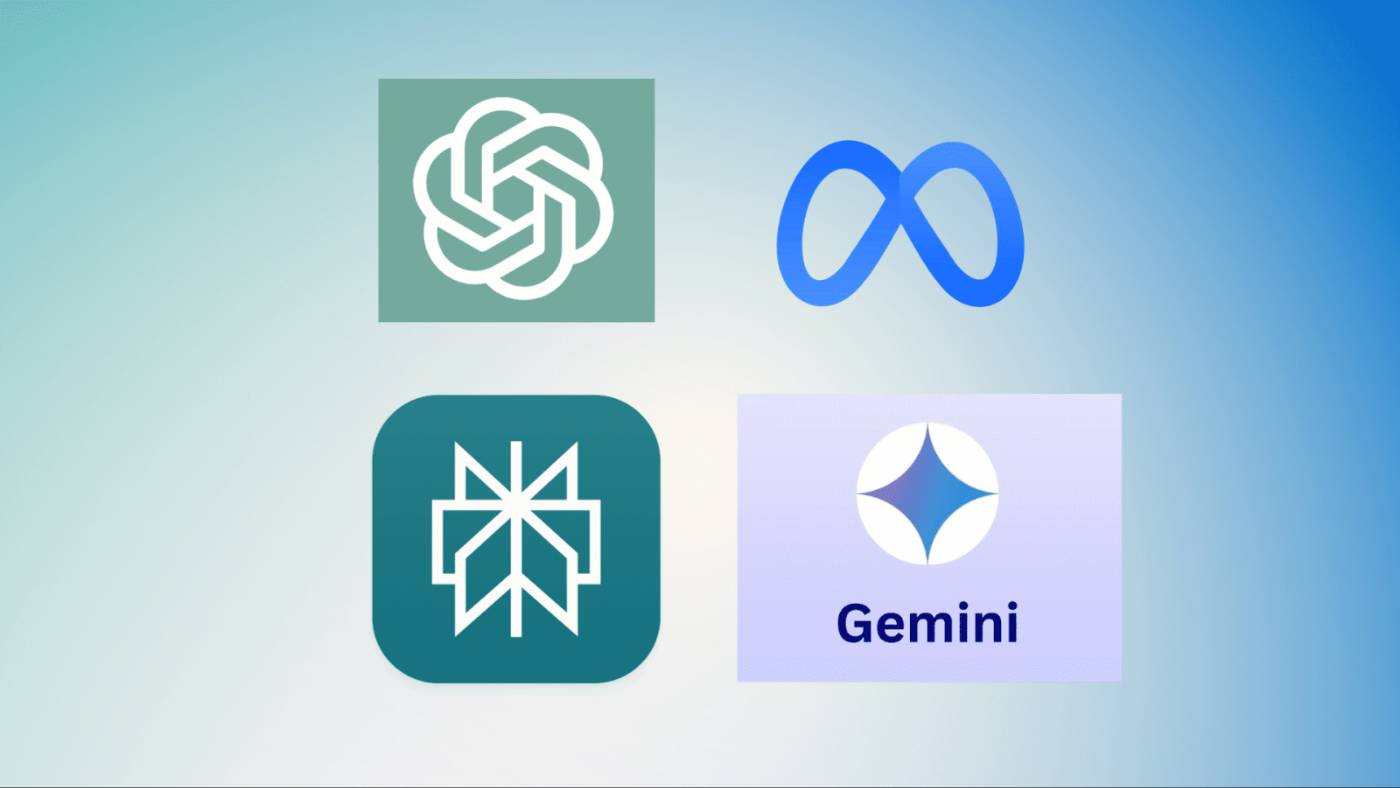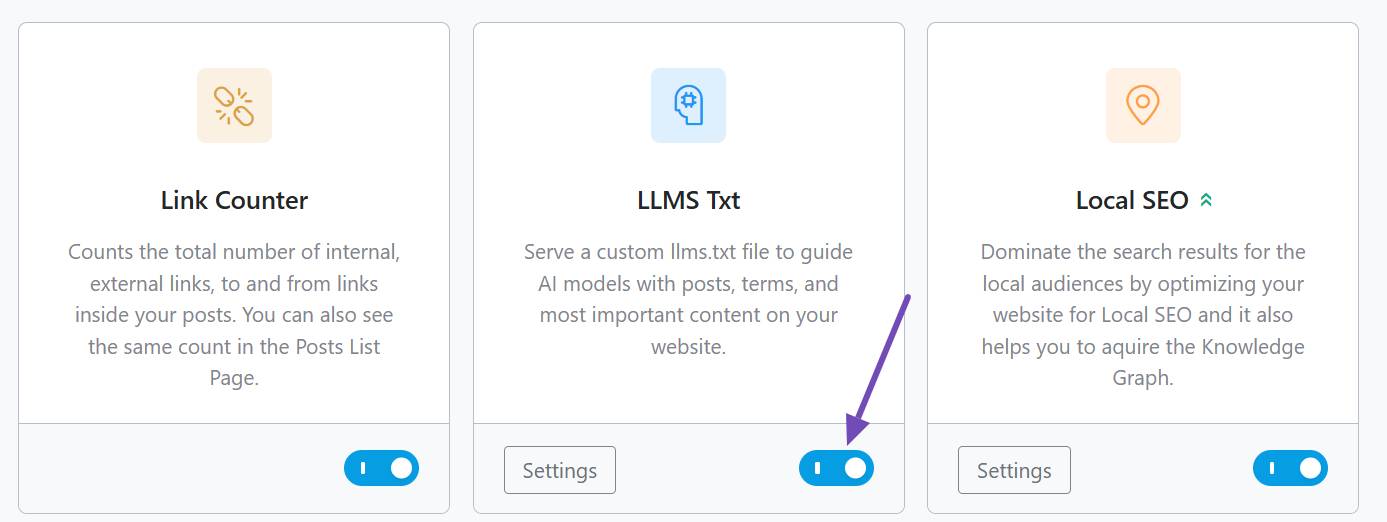Introduction
In 2025, SEO isn’t just about climbing Google’s traditional SERPs, it’s about being discoverable in AI-powered search engines and assistants. Whether users are asking questions in Google’s AI Overviews, Bing Copilot, ChatGPT, Perplexity, or Gemini, the answers they receive are drawn from existing websites. If your site isn’t optimized for AI discovery, you risk being invisible in this new search landscape.
This guide will show you how to optimize your site with Rank Math SEO. You’ll learn what llms.txt is, how Rank Math’s Content AI can structure your content, and how schema markup plus entity-rich writing can make your site the preferred choice for AI-powered results.

1. Why AI Search Optimization Is Crucial Now
Search is evolving quickly:
- AI-generated summaries are replacing traditional snippets. Instead of browsing ten links, users are often satisfied with one AI answer.
- AI engines cite sources. High-quality, structured content is more likely to be referenced.
- Authority and freshness matter more. AI tools tend to favor updated, trustworthy content to reduce misinformation.
For businesses, this means two things: (1) you must still play by Google’s rules, but (2) you also need to structure content so AI models can parse, trust, and use it. That’s where tools like Rank Math SEO come in.

2. Introducing llms.txt — A New Signal for AI
What is llms.txt?
Just like robots.txt tells search engines what to crawl, llms.txt helps Large Language Models (LLMs) understand which of your pages are most valuable. Instead of blocking bots, it acts like a priority list, pointing AI systems to the content you want them to learn from.
Why it matters
- It reduces noise by excluding low-value or duplicate pages.
- It highlights your pillar content — the articles you want cited in AI results.
- It creates a standardized, machine-friendly way to present your best work.
How to use it effectively
- Focus on your top 10–20 evergreen pages.
- Group them by topic (e.g., guides, tutorials, resources).
- Keep descriptions short but keyword-rich.
- Update quarterly so AI crawlers always see the most relevant content.
When combined with Rank Math’s llms.txt module, you can manage all of this directly from your WordPress dashboard.

3. Setting Up Rank Math for AI Search
If you’re not already using Rank Math SEO, now is the time. It’s one of the most AI-ready SEO plugins available for WordPress.
Step 1: Install & Configure
- Go to Plugins → Add New in WordPress.
- Search for Rank Math SEO and install.
- Use the setup wizard to connect your site, import settings (if switching from Yoast/All in One SEO), and activate modules.
Step 2: Enable the llms.txt Module
- Navigate to Rank Math → Dashboard.
- Toggle on the LLMS Txt module.
- In settings, choose which post types, categories, or pages should appear in your
llms.txt. - Add or remove URLs manually for precision.
Step 3: Turn On Content AI
- In the same dashboard, activate the Content AI module.
- This unlocks AI-assisted writing, optimization, and keyword suggestions directly inside your editor.
- You’ll also see “Fix with AI” buttons on SEO tests to auto-correct weak spots.
4. Structuring Content That AI Loves
Getting cited by AI search engines requires content that is easy for algorithms to interpret and valuable for humans to read.
Clear Headings & Hierarchy
AI crawlers rely on content hierarchy. Use one H1 (your main title), then organize subtopics with H2 and H3 tags. This makes both your article and metadata easier for AI systems to map.
Use Question-Based Formatting
Questions like “What is Rank Math Content AI?” or “How to set up llms.txt?” help target conversational queries — exactly the type people ask AI engines.
Incorporate Schema Markup
Rank Math SEO makes it simple to add schema types such as:
- FAQ schema for common questions
- HowTo schema for tutorials
- Article schema for long-form guides
- Organization schema to reinforce brand authority
This structured data helps AI models identify your content’s intent and context.
Add Entities & Context
AI thrives on entities — named people, tools, companies, places, and dates. Instead of generic language, specify:
- “Rank Math SEO plugin for WordPress” instead of just “SEO tool.”
- “llms.txt introduced in 2024 as an AI crawler standard” instead of “new file.”
Entities anchor your content to real-world knowledge graphs, improving credibility.
Deliver Unique Value
AI models scan billions of pages. What makes yours stand out? Add:
- Case studies with real numbers
- Screenshots of Rank Math dashboards
- Personal experiments with
llms.txt - Expert commentary or comparisons
This increases the chance of AI choosing your site as a source.
Also read related post:
5. Advanced AI SEO Best Practices
Beyond content formatting, here are tactics that matter in 2025:
Optimize for Conversational Search
People no longer search just “Rank Math SEO settings” — they ask “How do I configure Rank Math SEO for AI optimization?” Write with natural, conversational phrasing.
Balance Keywords & Intent
Yes, keywords matter, but stuffing them doesn’t. Instead:
- Use one seed keyword (“Optimize Your Site with Rank Math SEO”).
- Sprinkle 3–4 secondary keywords naturally (“AI search optimization,” “Rank Math Content AI,” “AI SEO best practices 2025”).
- Match content with user intent (guides, comparisons, tutorials).
Regular Content Updates
AI engines favor freshness. Schedule quarterly updates for:
- Adding new screenshots of Rank Math features
- Updating
llms.txtwith current high-priority URLs - Replacing outdated stats with new data
Internal Linking Strategy
Link to related posts with descriptive anchor text. Example: instead of “read more,” use “learn how to set up Rank Math Content AI.” This helps AI connect your site’s topical authority.
Avoid Common Mistakes
- Don’t block AI crawlers in robots.txt.
- Don’t rely solely on JavaScript rendering for critical content.
- Don’t publish auto-generated content without human review, it lowers trust signals.
To further enhance your site's SEO, consider reading our Rank Math SEO Review 2025 to understand its features and benefits.
Additionally, avoid common pitfalls by checking out our 6 Biggest SEO Mistakes to Avoid in 2024
6. Pitfalls to Watch Out For
Even with Rank Math SEO, there are traps you must avoid:
- Over-optimization: AI may penalize content stuffed with repetitive keywords.
- Ignoring analytics: Track AI traffic, citations, and CTR. If AI-generated answers reduce clicks, find ways to add unique value that compels users to visit your site.
- Neglecting authority: Build backlinks, get brand mentions, and showcase author expertise. AI models often cite well-known or authoritative sources first.
- One-time setup mindset: AI SEO isn’t “set and forget.” Your content, schema, and llms.txt need continuous refinement.
7. Conclusion
The rise of AI-powered search is transforming SEO faster than ever. Instead of fearing lost clicks to AI-generated summaries, smart marketers are asking: “How do I make my content the one AI tools cite?”
The answer lies in structuring your site for AI discoverability:
- Use
llms.txtto guide crawlers to your best content. - Leverage Rank Math SEO modules like Content AI and Schema to enhance clarity.
- Write entity-rich, conversational, value-packed content that answers real user queries.
- Continuously monitor, refine, and refresh your content.
By mastering these steps today, you’ll ensure that when people ask AI tools about your topic tomorrow, your site will be the one in the answer box.
For those interested in pursuing a career in digital marketing, our guide on How to Start a Career in Digital Marketing in 2024 provides valuable insights.
